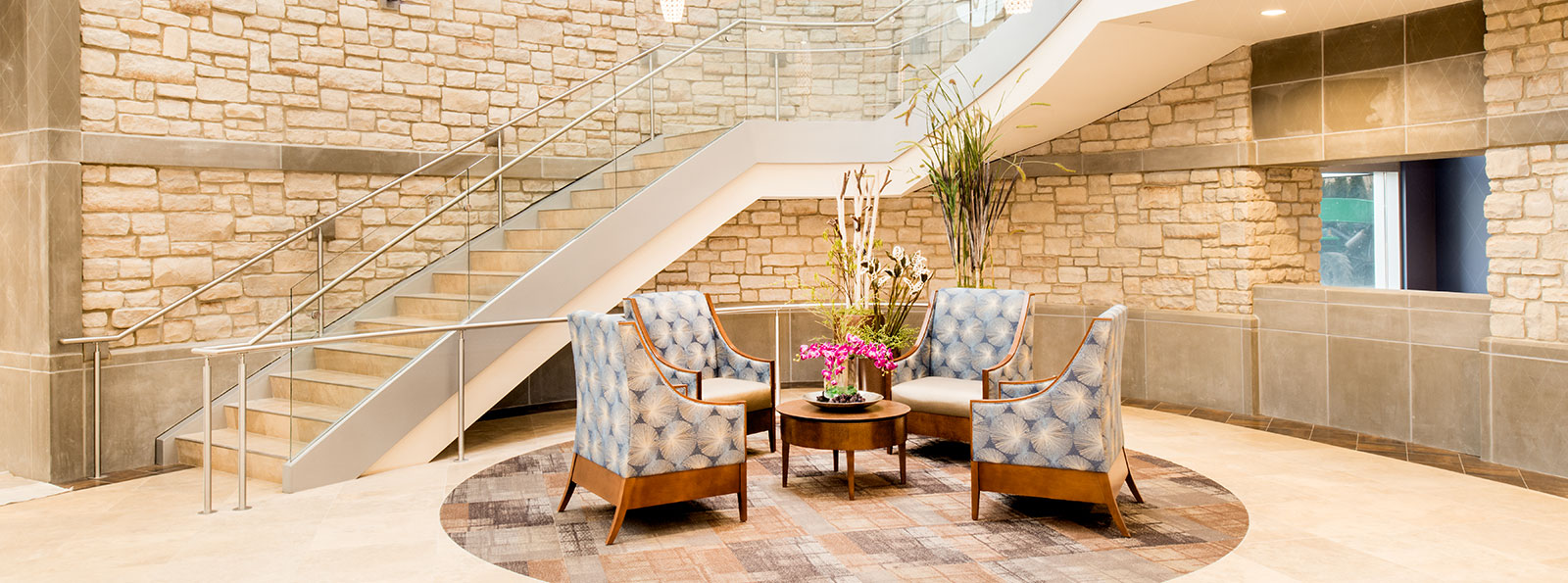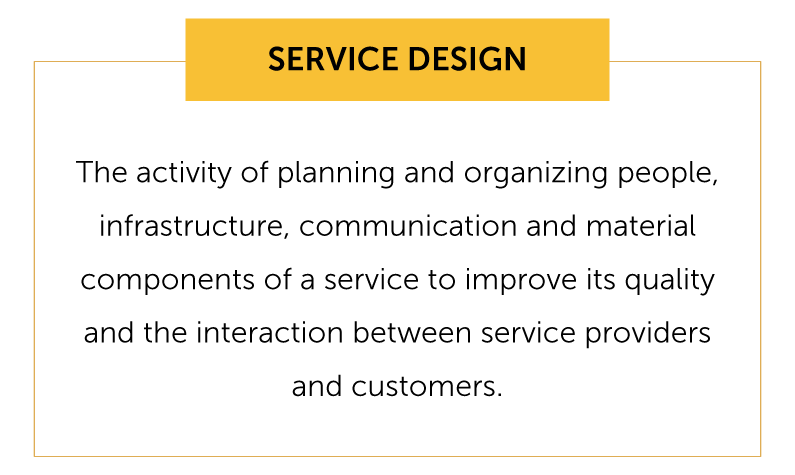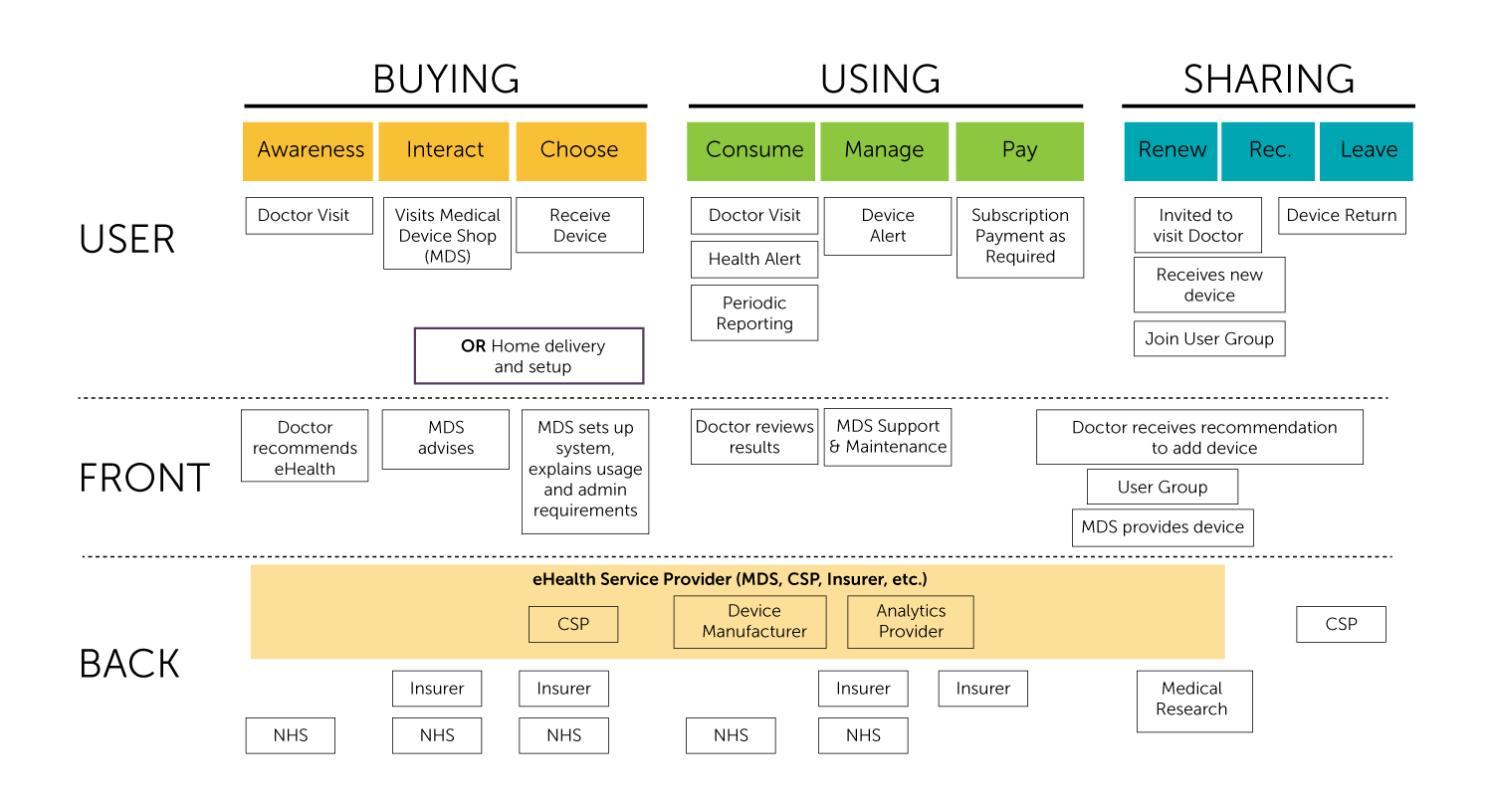In my previous post, I described the importance of Experience Mapping and my realization that if we would have filled the behavior and resource gaps, we could have achieved an even more robust outcome. Using the gathered processes and data, I began looking at ways we could enhance our process to make ourselves more efficient, as well as achieve more meaningful outcomes for our clients and their patients.

The first thing I began to investigate was the behavior gap. I personally envisioned this as expanding the touch-point conversation to not only address the empathetic requirements of the customer – what should the customer say, feel, hear, see and think – but also to define the customer behavior that the design should provoke or enhance—what should the customer do—based on the client’s operational models. Moreover, perhaps most importantly, I felt a comprehensive approach should articulate the specific design strategies that would result in the desired behaviors.
Historically, this would have been a daunting challenge; while evidence-based design presented a book of validated outcomes from specific design aspects, its focus was not behaviorally predictive. However, we are currently in an awe-inspiring age of research in which the neuroscience of human cognition relates to behavior as a response to the designed environment. Researchers like John P. Eberhard, founder of the Academy of Neuroscience for Architecture; John Zeisel, founder of Hearthstone Alzheimer Care; and Ann Sussman and Justin B. Hollander, authors of Cognitive Architecture: Designing for How We Respond to the Built Environment; have created a dialogue and advance our understanding of how humans instinctively respond to the environmental of the built environment. Organizations such as Research Design Connections have begun to collect, organize and coordinate the work of “cognitive scientists and other researchers in the social, design and physical sciences” into easily searchable databases. As the scientifically validated data continues to grow, forecasting the operational improvements and the corresponding fiscal value of specific design elements becomes a real possibility, which is a critical element of changing the perception of design as a superfluous luxury into a value-adding operational necessity.
To fill the resource gap, I began looking at some of the theories in development in the UX industry. Of particular relevance was the emerging concept of Service Design, which focuses on “the activity of planning and organizing people, infrastructure, communication and material components of a service to improve its quality and the interaction between service providers and customers.” The Service Blueprint tool that the UX industry developed to design the connections between the back- and front-of-house services to enhance user-friendliness and customer relevance particularly resonated with me. It was a simple conceptual leap—how could the Service Blueprint model be morphed to provide an architectural design tool complementary to our visual experience map, but provided more definitive strategies and data.

We envision the tool we’re developing, which we’re referring to as a Design Strategies and Resource Map, as a reference for both the design team as they begin to give form to the goals and data that define project success and our clients as they plan and allocate the resources required for operational effectiveness. From a design orientation, we’ve organized this tool as a process map centered on the touch-point sequence (Customer Action) and the design aspects (Physical Evidence), which form the interface between the client (the Provider) and the Customer/Patient. The Process articulates the resources required from the Provider, which include the customer-facing On-Stage activities, the back-of-house Off-Stage activities, and the Support resources needed to enable these activities. While traditionally viewed as outside the scope of architectural design services, if we can leverage the integration of many of these Process activities and resources to help our clients conceptualize the activities that support a project’s success, the probability of achieving theorized post-occupancy operational metrics increases dramatically, and is well worth the effort.
On the other side of the interface, we’ve defined the Reaction that the design should elicit from the Customer/Patient in two distinct, but inextricably linked, paths. The first path links the Empathetic Design measures with the Customer Action sequence and the Physical Evidence of the project design. This path defines what the customer should say, feel, hear, see and think as they interact with the design, as well as describes the design’s emotional context. The second Reaction path makes the same connections on a Behavioral Design level by listing the operationally desirable actions the design should elicit from the customer.
Finally, we’ve overlaid a listing of the empirically validated Design Strategies we can integrate to support the desired Empathetic and Behavioral design qualities. It’s important that these strategies clearly define the environmental characteristics required, as well as provide source references to the supporting research. To me, this layer could be the single most important methodology of changing the perception of design from a luxury into one of deep-rooted value within the context of a viable and sustainable business model. If we can make the direct correlation between a design strategy and improved performance from operational and fiscal perspectives, our workflow will be much more efficient and our projects much more successful.

The hope is that when we couple the visually-oriented Experience Map with a data-rich Design Strategy and Resource Map, we can connect “right-brain” creativity with “left-brain” rationality, enhancing both while improving our client’s bottom line. Ideally, this tool can become an actionable guide for the design team as they craft the project and for the owner as they align supporting resources. However, as always, when implementing this methodology into our workflow we’ll discover ways to refine and improve the information contained in these maps—how we gather that information, and how we use the information to shape our designs. We’ll provide updates as we learn more!




